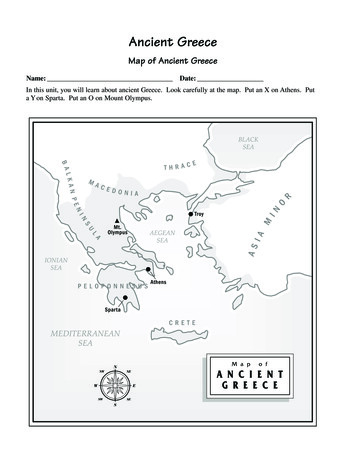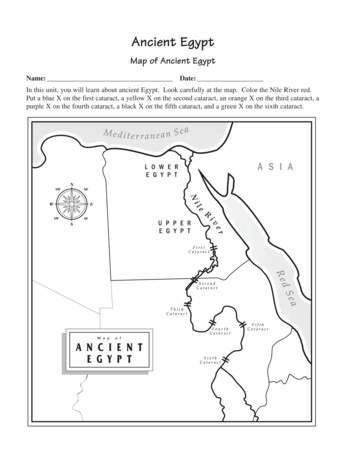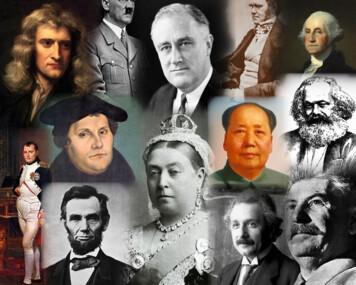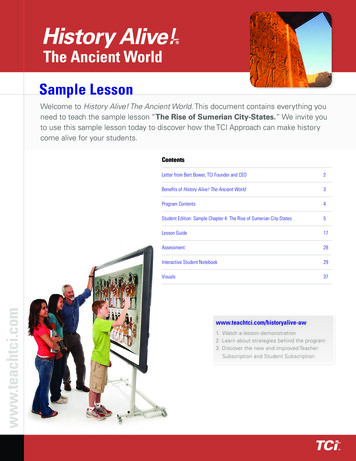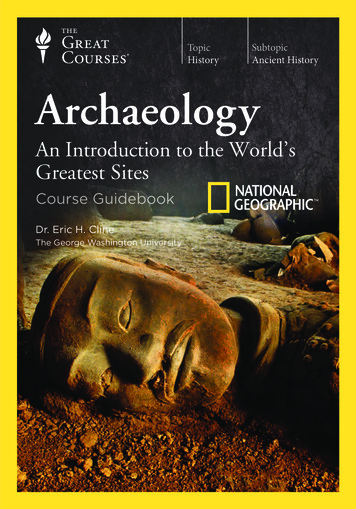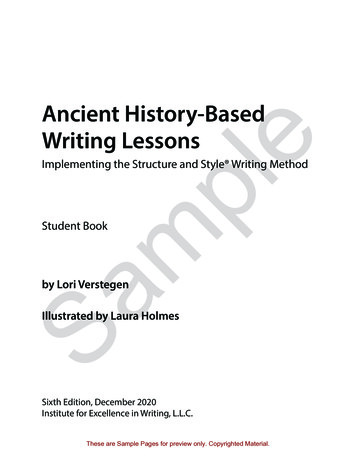
Transcription
eAncient History-BasedWriting LessonsmplImplementing the Structure and Style Writing MethodStudent BookSaby Lori VerstegenIllustrated by Laura HolmesSixth Edition, December 2020Institute for Excellence in Writing, L.L.C.These are Sample Pages for preview only. Copyrighted Material.
Also by Lori VerstegenMedieval History-Based Writing LessonsModern World History-Based Writing LessonsU.S. History-Based Writing LessonseAdvanced U.S. History-Based Writing LessonsAll Things Fun and Fascinating Writing LessonsBible Heroes Writing LessonsDress-Ups, Decorations, and Delightful DiversionsmplThe purchase of this book allows its owner access to PDF downloads that accompany Ancient HistoryBased Writing Lessons. See blue page for details and download instructions. Our duplicating/copyingpolicy for these resources is specified on the copyright page for each of these downloads.Copyright PolicyAncient History-Based Writing Lessons: Implementing the Structure and Style Writing Method Student BookSixth Edition, December 2020Copyright 2020 Institute for Excellence in WritingISBN 978-1-62341-344-6Our duplicating/copying policy for Ancient History-Based Writing Lessons Student Book:All rights reserved.No part of this book may be reproduced, stored in a retrieval system, or transmitted in any form or by any means,electronic, mechanical, photocopying, recording, or otherwise, without the prior written permission of thepublisher, except as provided by U.S.A. copyright law and the specific policy below:SaHome use: The purchaser may copy this Student Book for use by multiple children within his or her immediatefamily. Each family must purchase its own Student Book.Small group or co-op classes: Each participating student or family is required to purchase a Student Book.A teacher may not copy from this Student Book.Classroom teachers: A Student Book must be purchased for each participating student. A teacher may not copyfrom this Student Book.Additional copies of this Student Book may be purchased from IEW.com/AHW-SInstitute for Excellence in Writing (IEW )8799 N. 387 RoadLocust Grove, OK 74352800.856.5815info@IEW.comIEW.comPrinted in the United States of AmericaIEW and Structure and Style are registered trademarks of the Institute for Excellence in Writing, L.L.C.These lessons are not intended as a history curriculum replacement, but rather their purpose is to broadensubject knowledge while students learn to write.These are Sample Pages for preview only. Copyrighted Material.
ContentsIntroduction . . . . . . . . . . . . . . . . . . . . . . . . . . . . . . . . . . . . . . . . . . . . . . . . . . . . . . . . . . . . . . . . . . . . . . . . . . . . . . . . . . . . . 5Scope and Sequence . . . . . . . . . . . . . . . . . . . . . . . . . . . . . . . . . . . . . . . . . . . . . . . . . . . . . . . . . . . . . . . . . . . . . . . . . . . . 8UNIT 1: NOTE MAKING AND OUTLINESLesson 1The Hanging Gardens of Babylon . . . . . . . . . . . . . . . . . . . . . . . . . . . . . . . . . . . . . . . . 11UNIT 2: WRITING FROM NOTESThe Lighthouse of Alexandria . . . . . . . . . . . . . . . . . . . . . . . . . . . . . . . . . . . . . . . . . . . . 17Roman Hypocaust Systems . . . . . . . . . . . . . . . . . . . . . . . . . . . . . . . . . . . . . . . . . . . . . . 27Roman Aqueducts . . . . . . . . . . . . . . . . . . . . . . . . . . . . . . . . . . . . . . . . . . . . . . . . . . . . . . 33UNIT 3: RETELLING NARRATIVE STORIESThe Wind and the Sun . . . . . . . . . . . . . . . . . . . . . . . . . . . . . . . . . . . . . . . . . . . . . . . . . . . 41The Sword of Damocles . . . . . . . . . . . . . . . . . . . . . . . . . . . . . . . . . . . . . . . . . . . . . . . . . 51The Trojan Horse . . . . . . . . . . . . . . . . . . . . . . . . . . . . . . . . . . . . . . . . . . . . . . . . . . . . . . . . 61Cincinnatus Rules Rome . . . . . . . . . . . . . . . . . . . . . . . . . . . . . . . . . . . . . . . . . . . . . . . . . 71mplLesson 5Lesson 6Lesson 7Lesson 8eLesson 2Lesson 3Lesson 4UNIT 4: SUMMARIZING A REFERENCELesson 9Lesson 10Lesson 11Lesson 12The Epic of Gilgamesh . . . . . . . . . . . . . . . . . . . . . . . . . . . . . . . . . . . . . . . . . . . . . . . . . . . 81King Tut . . . . . . . . . . . . . . . . . . . . . . . . . . . . . . . . . . . . . . . . . . . . . . . . . . . . . . . . . . . . . . 89The Mayans and Chocolate . . . . . . . . . . . . . . . . . . . . . . . . . . . . . . . . . . . . . . . . . . . . . . 97Ashurbanipal’s Library . . . . . . . . . . . . . . . . . . . . . . . . . . . . . . . . . . . . . . . . . . . . . . . . . . 107UNIT 5: WRITING FROM PICTURESA Pharos Island Legend . . . . . . . . . . . . . . . . . . . . . . . . . . . . . . . . . . . . . . . . . . . . . . . . . 119A Roman Chariot Race . . . . . . . . . . . . . . . . . . . . . . . . . . . . . . . . . . . . . . . . . . . . . . . . . . 129An Egyptian Tomb . . . . . . . . . . . . . . . . . . . . . . . . . . . . . . . . . . . . . . . . . . . . . . . . . . . . . 139SaLesson 13Lesson 14Lesson 15UNIT 6: SUMMARIZING MULTIPLE REFERENCESLesson 16Lesson 17Lesson 18Lesson 19Pentre Ifan . . . . . . . . . . . . . . . . . . . . . . . . . . . . . . . . . . . . . . . . . . . . . . . . . . . . . . . . . . . . .Pompeii, Part 1 . . . . . . . . . . . . . . . . . . . . . . . . . . . . . . . . . . . . . . . . . . . . . . . . . . . . . . . . .Pompeii, Part 2 . . . . . . . . . . . . . . . . . . . . . . . . . . . . . . . . . . . . . . . . . . . . . . . . . . . . . . . . .Pliny the Younger . . . . . . . . . . . . . . . . . . . . . . . . . . . . . . . . . . . . . . . . . . . . . . . . . . . . . .These are Sample Pages for preview only. Copyrighted Material.147157173183
UNIT 7: INVENTIVE WRITINGLesson 20Lesson 21Lesson 22Lesson 23Water, Part 1 . . . . . . . . . . . . . . . . . . . . . . . . . . . . . . . . . . . . . . . . . . . . . . . . . . . . . . . . . . .Water, Part 2 . . . . . . . . . . . . . . . . . . . . . . . . . . . . . . . . . . . . . . . . . . . . . . . . . . . . . . . . . . .Ancient Wonders, Part 1 . . . . . . . . . . . . . . . . . . . . . . . . . . . . . . . . . . . . . . . . . . . . . . . .Ancient Wonders, Part 2 . . . . . . . . . . . . . . . . . . . . . . . . . . . . . . . . . . . . . . . . . . . . . . . .195203213221UNIT 8: FORMAL ESSAY MODELSLesson 24Lesson 25Lesson 26Pompeii, Part 3 . . . . . . . . . . . . . . . . . . . . . . . . . . . . . . . . . . . . . . . . . . . . . . . . . . . . . . . . . 229A Prominent Person, Part 1 . . . . . . . . . . . . . . . . . . . . . . . . . . . . . . . . . . . . . . . . . . . . . 241A Prominent Person, Part 2 . . . . . . . . . . . . . . . . . . . . . . . . . . . . . . . . . . . . . . . . . . . . . 253eUNIT 9: FORMAL CRITIQUE AND RESPONSE TO LITERATURELesson 27The Taming of Bucephalus, Part 1 . . . . . . . . . . . . . . . . . . . . . . . . . . . . . . . . . . . . . . .Lesson 28The Taming of Bucephalus, Part 2 . . . . . . . . . . . . . . . . . . . . . . . . . . . . . . . . . . . . . . .Lesson 29The Curse of the Sphinx, Part 1 . . . . . . . . . . . . . . . . . . . . . . . . . . . . . . . . . . . . . . . . . .Lesson 30The Curse of the Sphinx, Part 2 . . . . . . . . . . . . . . . . . . . . . . . . . . . . . . . . . . . . . . . . . .mplAppendicesModified MLA Format . . . . . . . . . . . . . . . . . . . . . . . . . . . . . . . . . . . . . . . . . . . . . . . . . . . . . . . . . . . . .Mechanics . . . . . . . . . . . . . . . . . . . . . . . . . . . . . . . . . . . . . . . . . . . . . . . . . . . . . . . . . . . . . . . . . . . . . . . .Critique Thesaurus . . . . . . . . . . . . . . . . . . . . . . . . . . . . . . . . . . . . . . . . . . . . . . . . . . . . . . . . . . . . . . . .Adding Literature . . . . . . . . . . . . . . . . . . . . . . . . . . . . . . . . . . . . . . . . . . . . . . . . . . . . . . . . . . . . . . . . .Vocabulary (Cards in Student Book only) . . . . . . . . . . . . . . . . . . . . . . . . . . . . . . . . . . . . . . . . . . .Review Games (Teacher’s Manual only) . . . . . . . . . . . . . . . . . . . . . . . . . . . . . . . . . . . . . . . . . . . .SaI.II.III.IV.V.VI.259267273283These are Sample Pages for preview only. Copyrighted Material.291293297299301317
IntroductionIntroductionThe lessons in this book teach Structure and Style in writing. As they move through varioushistory themes and topics, they incrementally introduce and review the models of structureand elements of style found in the Institute for Excellence in Writing’s Teaching Writing:Structure and Style .Student Book ContentseIt is important to note that these lessons are not intended as a history curriculum replacement,but rather their purpose is to broaden subject knowledge while students learn to write. Theprimary purpose is for students to learn structure and style in writing.Scope and Sequence Chart (pages 8–9) The Lesson PagesThis is the majority of the text. It contains the instructions, source texts, worksheets,and checklists you will need for each lesson. Appendix I: Modified MLA Format Appendix II: MechanicsThis appendix contains a compilation of the correct mechanics of writing numbers,punctuating dates, referencing individuals, etc. that are found in many of the lessons.Well-written compositions are not only written with structure and style, but they alsocontain correctly spelled words and proper punctuation. Appendix III: Critique ThesaurusThis appendix provides a list of literary terms and their synonyms that are oftenused when critiquing various forms of literature. This page will be used in Unit 9. Appendix IV: Adding LiteratureThis appendix suggests various stories to be read or listened to. Most books areat a fourth through sixth grade reading level but other grade levels are also included.Books at a higher reading level are great read alouds for younger students.Sampl Appendix V: Vocabulary Chart and Quizzes (Cards in Student Book only)This appendix provides a list of the vocabulary words and their definitions organizedby lesson as well as quizzes to take periodically. Twenty-two lessons include newvocabulary words to cut out, study, and learn. Every lesson includes vocabularypractice. The goal is that these great words will become part of your natural writingvocabulary.Ancient History-Based Writing Lessons: Student BookThese are Sample Pages for preview only. Copyrighted Material.5
IntroductionChecklistsEach lesson includes a checklist that details all the requirements of the assignment. Tearthe checklist out of the book so that you can use it while writing. Check off each elementwhen you are sure it is included in your paper. With each assignment, turn in the checklistto be used by the teacher for grading. Reproducible checklists are available. See the bluepage for download information.Teacher’s ManualTeaching Writing: Structure and StyleeThe Teacher’s Manual includes all of the Student Book contents (except the vocabularycards) with added instructions for teachers, including sample key word outlines and stylepractice ideas. Teachers may teach directly from this manual without the need of theirown copy of the Student Book.mplAlong with the accompanying Teacher’s Manual for this Student Book, it is requiredthat the teacher of this course has access to Teaching Writing: Structure and Style. Thisproduct is available in DVD format or Forever Streaming. For more information, pleasevisit IEW.com/TWSSAdapting the ScheduleSaGroups who follow a schedule with fewer than thirty weeks will have to omit somelessons. Because there are several lessons for each of the nine IEW units, this is not aproblem. Teach lessons that introduce new concepts and omit some of those that do not.6Institute for Excellence in WritingThese are Sample Pages for preview only. Copyrighted Material.
IntroductionSuggested Weekly ScheduleAll of the instructions for what to do each week are included in the Assignment Schedule locatedon the first page of each lesson. While there may be slight variations, most lessons are organizedas follows:Day 11. Review vocabulary words or past lesson concepts.2. Learn a new structural model and/or writing concepts.Day 21. Review the KWO from Day 1.e3. Read the source text, write a key word outline (KWO), and tell back the meaningof each line of notes.mpl2. Learn a new stylistic technique and complete practice exercises.3. Study the vocabulary words for the current lesson and complete vocabulary exercises.4. Begin the rough draft using the KWO. Follow the checklist.Day 31. Review vocabulary words.2. Finish writing your composition and check each item on the checklist.3. Submit your composition to an editor with completed checklist attached.Day 41. Write or type a final draft making any corrections your editor asked you to make.Sa2. Paperclip the checklist, final draft, rough draft, and KWO together. Hand them in.The lessons are organized in such a way that all new concepts regarding structure are introducedon day 1, and new style concepts and vocabulary words are introduced on day 2.Students will benefit from learning new structure and style concepts with a teacher. In addition,students should plan to read the source text and begin KWOs with a teacher. These instructionsare also found on day 1.The instructions on day 3 and day 4 may be completed by students more independently.However, teachers and/or parents should be available to help and to edit.Ancient History-Based Writing Lessons: Student BookThese are Sample Pages for preview only. Copyrighted Material.7
Scope and SequenceLessonSubject andStructureStyle(First Introduced)VocabularyWordsUnit 11The Hanging Gardens of Babylonintroduction to stylecolossal, fashionradiant, stunningUnit 22The Lighthouse of Alexandria3Roman Hypocaust Systems4Roman AqueductsUnit 35The Wind and the Sun78Unit 49The Sword of Damocles8erect, incrediblyruthlessly,toweringecomplex, driftingeniously,steadilywho/which clausecrucial, durablefortunately,impressivebellow, cordiallyemerge,vigorouslystrong verbbanned words:go/went, say/saidanticipate, contentenvy, gaspThe Trojan Horsebecause clausecunningly, gapepenetrate,resolutelyCincinnatus Rules Romebanned words:get/gotdespair, extolplead, prudentlyquality adjectiveadept, cherishevolve, vastThe Epic of Gilgameshtopic-clincher sentencesKing TutSa10title rule-ly adverbA Place inthe Sunby JillRubalcabaDetectives inTogasby HenryWinterfeldORmpl6introduction to structureLiteratureSuggestionsbanned words:good, bad, big, small11The Mayans and Chocolatewww.asia clauseanoint, extractprestigious,renowned12Ashurbanipal’s Library#2 prepositional openerdevastating,diversedivulge,momentousUnit 513A Pharos Island Legend14A Roman Chariot Race15An Egyptian Tombecstatic, intriguedpetrified, stroll#3 -ly adverb openeradorn, careenconfidently,distressTales fromthe Odyssey,Part 1by Mary PopeOsborneThe GilgameshTrilogyby LudmilaZeman(Picture Book)Who WasKing Tut?by RobertaEdwardsTheCharioteerof Delphi(The RomanMysteries)by CarolineLawrenceretrieve, scoursinister, tentativeInstitute for Excellence in WritingThese are Sample Pages for preview only. Copyrighted Material.
LessonSubject andStructureUnit 616Pentre Ifansource and fused outlines17Pompeii, Part 118Pompeii, Part 2Pliny the Youngeradditional sources requiredWater, Part 121Water, Part 2Unit 82425ample, flourishreside, venueThe Secretsof Vesuvius(The RomanMysteries)by CarolineLawrenceencase, ghastlyunearth, spewascend, elitelegacy, surge#5 clausal openerwww.asia.b clausedeftly, depletefeat, introduction and conclusionAncient Wonders, Part 1baffle, captivatecountless, lushAncient Wonders, Part 2Pompeii, Part 3#1 subject opener#4 -ing openerachievement,advantage benefit,contributionMystery ofthe RomanRansomby HenryWinterfeldA Prominent Person, Part 2Unit 927The Taming of Bucephalus, Part 128The Taming of Bucephalus, Part 229The Curse of the Sphinx, Part 1character analysis30The Curse of the Sphinx, Part 2ORThe GoldenGobletby EloiseJarvis McGrawWho WasAlexanderthe Great?by KathrynWaterfieldand RobinWaterfieldORWho WasJulius Caesar?by Nico MedinaA Prominent Person, Part 1additional sources requiredSa26#6 vss openermplbody paragraphs23LiteratureSuggestionsworks consultedUnit 72022VocabularyWordse19Style(First Introduced)antagonist, climaxprotagonist, themeMara,Daughterof the Nileby EloiseJarvis McGrawORCleopatryby DianeStanley(PIcture Book)For book grade levels and more literature suggestions, see Appendix IV.Ancient History-Based Writing Lessons: Student BookThese are Sample Pages for preview only. Copyrighted Material.9
emplSa10Institute for Excellence in WritingThese are Sample Pages for preview only. Copyrighted Material.
Lesson 1: The Hanging Gardens of BabylonUNIT 1: NOTE MAKING AND OUTLINESLesson 1: The Hanging Gardens of BabylonGoalsto learn the Unit 1 Note Making and Outlines structural model to create a key word outline (KWO) to retell the content of a source text using just your outline to use new vocabulary words: colossal, fashion, radiant, stunningAssignment ScheduleDay 1e 1. Read Introduction to Structure and Style and New Structure—Note Making and Outlines.Day 2mpl2. Read “The Hanging Gardens of Babylon.” Read it again and write a key word outline (KWO).1. Review your KWO from Day 1.2. Look at the vocabulary cards for Lesson 1. Complete Vocabulary Practice.3. Try to add at least one vocabulary word to your KWO.Day 31. Prepare to give an oral report using your KWO. Read. Think. Look up. Speak. Practicetelling back the information one line at a time. Read a line; then, look up and talk about it.Then read the next line, look up, and talk about it. Continue through the outline this way.Sa2. Practice until the presentation of the paragraph is smooth. It is important to realize that youare not trying to memorize the exact words of the source text. You are trying to rememberthe ideas and communicate those ideas in your own words.Day 41. Review the vocabulary words.2. After practicing, use your KWO and give an oral report to a friend or family member asexplained on Day 3. If applicable, be prepared to give the oral report in class.Literature SuggestionsIf you wish to incorporate literature into the curriculum, see a suggested list of books in Appendix IV.Ancient History-Based Writing Lessons: Student BookThese are Sample Pages for preview only. Copyrighted Material.11
UNIT 1: NOTE MAKING AND OUTLINESIntroduction to Structure and StyleIn this book you will learn many ways to make your writing more exciting and more enjoyable toread. You will learn to write with structure and with style.StructureWhat is structure? The dictionary defines structure as “the arrangement of and relations betweenthe parts or elements of something complex.”eWhat has structure? Think of a house. What had to happen before the house was built? Thearchitect had to draw the blueprints, the plans, for the builders to follow. The builders had tofollow the plans so that each contractor could arrive on time. You cannot put the walls up beforethe foundation is poured. You certainly cannot put the roof on before the frame is finished. Eachstep must be completed in order so that the house has proper structure.StylemplWriting a paper, in some ways, is similar to building a house. A paper contains many facts andideas. If you were just to begin writing without planning, your facts and ideas would probablynot be arranged in the most logical way. Your composition would not be structured well andwould not communicate your thoughts effectively. In this course you will “draw plans” foreverything before you write. Your “plans” will be outlines, and they will follow a particularmodel of structure for each type of composition.What comes to your mind when you hear the word style? Many people think of clothes. Clothescome in a variety of styles. One would dress differently to attend a wedding than to go to abaseball game. That is because formal events require a formal style of clothing, whereas casualsettings do not.Similarly, there are also different styles of language. Below are two sentences that communicatethe same information in different styles. Which do you like better?SaHe dropped the tablet!As the guide carefully lifted the priceless clay tablet, it suddenly slipped from his hands,plummeted to the ground, and shattered into pieces.You probably like the second sentence better because it is more descriptive. When you write, youmust realize that the readers are not with you and cannot see, hear, or feel what is in your mind.This means that you must fill in the details and paint vivid pictures with your words. Descriptivewords will help readers see, hear, feel, and experience the scene you are writing about as thesecond sentence does. The IEW elements of style will give you the tools you need to do just this.12Institute for Excellence in WritingThese are Sample Pages for preview only. Copyrighted Material.
Lesson 1: The Hanging Gardens of BabylonNew StructureNote Making and OutlinesIn Unit 1 you will practice choosing key words to form an outline—a key word outline (KWO).A KWO is one way to take notes. Key words indicate the main idea of a sentence. By writingdown these important words, you can remember the main idea of a text.Read the source text. Then locate two or three important words in each sentence that indicate themain idea. Transfer those words to the KWO. Write the key words for the first fact of the KWOon the Roman numeral line. Write no more than three words on each line.SampleSymbols, numbers, and abbreviations are “free.” Symbols take less time to draw than it wouldtake to write the word. Abbreviations are commonly accepted shortened forms of words. Can youguess what each of the following might stand for?Ancient History-Based Writing Lessons: Student BookThese are Sample Pages for preview only. Copyrighted Material.13
UNIT 1: NOTE MAKING AND OUTLINESSource TextThe Hanging Gardens of BabylonThe Hanging Gardens of Babylon are considered one of the Seven Wondersof the Ancient World. According to legend, King Nebuchadnezzar of Babylonconstructed them for his wife around 600 BC. Because Babylon was a flat deserteland, the king had a massive structure built. Next, he filled every level of it withtall trees and gorgeous flowering plants. As they grew, many of the plants hungmplover the edges of the structure. These hanging plants probably gave the gardenstheir name. The breathtakingly beautiful gardens could be seen from miles away.SaLike a mountain of color in a vast brown land, all who saw the gardens marveled.MechanicsTitles that precede a name or a country must be capitalized. Do not capitalize titles that are not used with a name orthat follow a name.14Institute for Excellence in WritingThese are Sample Pages for preview only. Copyrighted Material.
Lesson 1: The Hanging Gardens of BabylonKey Word OutlineOn the lines below, write no more than three key words from each sentence of the source text.Choose words that will best help you remember the meaning of the sentence. Use symbols,numbers, and abbreviations freely. They do not count as words. However, be sure you canremember what they mean.I.e1.2.4.5.6.7.mpl3.SaCover the source text and tell the meaning of each line of notes in your own words.If a note is unclear, check the source text and add what you need to in order to make it clear.Ancient History-Based Writing Lessons: Student BookThese are Sample Pages for preview only. Copyrighted Material.15
UNIT 1: NOTE MAKING AND OUTLINESVocabulary PracticeListen to someone read the vocabulary words for Lesson 1 aloud.Speak them aloud yourself.Read the definitions and sample sentences on the vocabulary cards.eWrite four sentences using one of this lesson’s vocabulary words in each sentence.You may use derivatives of the words. For example, you may add an-ed, -s, or -ing to a basic vocabulary word.mplcolossalfashionSaradiantstunningThink about the words and their meanings so you can use them in your assignments.16Institute for Excellence in WritingThese are Sample Pages for preview only. Copyrighted Material.
Lesson 4: Roman AqueductsUNIT 2: WRITING FROM NOTESLesson 4: Roman AqueductsGoalsto practice the Units 1 and 2 structural models to create a 2-paragraph KWO to write a 2-paragraph summary to add a dress-up: who/which clause to create a title to use new vocabulary words: crucial, durable, fortunately, impressiveAssignment ScheduleDay 1e mpl1. Read “Roman Aqueducts.” Read it again and write a KWO.2. Read New Structure—Titles.Day 21. Review your KWO from Day 1.2. Learn a new dress-up, the who/which clause. Read New Style and complete Style Practice.3. Look at the vocabulary cards for Lesson 4. Complete Vocabulary Practice.4. Using your KWO and Style Practice to guide you, begin writing a rough draft in your own words.5. Go over the checklist. Put a check in the box for each requirement you have completed.Day 3Sa1. Review all vocabulary words learned thus far.2. Finish writing your 2-paragraph summary. Include an -ly adverb dress-up and a who/whichclause dress-up in each paragraph.3. Turn in your rough draft to your editor with the completed checklist attached.Day 41. Write or type a final draft making any corrections your editor asked you to make.2. Paperclip the checklist, final draft, rough draft, and KWO together. Hand them in.Ancient History-Based Writing Lessons: Student BookThese are Sample Pages for preview only. Copyrighted Material.33
UNIT 2: WRITING FROM NOTESSource TextRoman AqueductsHundreds of miles of aqueducts stretched throughout the Roman Empire. Theybrought fresh water into the cities. Some snaked underground, and others rose highover the land. Acting like giant, gently-sloping water slides, the aqueducts carriedewater from the mountains. The water flowed into huge holding tanks or fountains.With this system the Romans could easily access water sixty miles away. Becausemplthese structures were made of stone, brick, or cement, they were strong. In fact,they were so well-built that some are still used today.Aqueducts kept the Roman people healthy. Romans used the water fordrinking, bathing, and growing crops. Remarkably some wealthy Romans even hadplumbing that brought running water into their homes. However, the aqueducts didnot just carry water into the city. In addition, they took dirty water and sewage outSaof the city. This was especially important to prevent disease. The crucial Romanaqueducts were, and still are, remarkable structures.MechanicsContractions are not used in academic writing.34Institute for Excellence in WritingThese are Sample Pages for preview only. Copyrighted Material.
Lesson 4: Roman AqueductsKey Word OutlineEach Roman numeral represents one er the source text and tell the meaning of each line of notes in your own words.If a note is unclear, check the source text and add what you need to in order to make it clear.Ancient History-Based Writing Lessons: Student BookThese are Sample Pages for preview only. Copyrighted Material.35
UNIT 2: WRITING FROM NOTESNew StructureTitlesAn interesting title grabs a reader’s attention. To make an intriguing title, repeat one to three keywords from the final sentence.A Mountain of ColorGardens in the Desert”mplMarvelous Desert Gardens“Title repeatsone to threekey wordsfrom finalsentence.eThe last sentence of “The Hanging Gardens ofBabylon” (Lesson 1 source text) states, “Like amountain of color in a vast brown land, all whosaw the gardens marveled.” A variety of differenttitles can be written using the key words.Titles have simple rules for capitalization:Capitalize the first word and the last word.Capitalize all other words except articles (a, an, the), coordinating conjunctions(for, and, nor, but, or, yet, so), and prepositions (such as in, over, on, without).PracticeSaYou do not know what your final sentence for this writing assignment will be. However,you can practice forming titles using the source text. The final sentence of the source textwith key words in bold is below. Create an intriguing title that includes one to three ofthese words. Write two or three ideas.The crucial Roman aqueducts were, and still are, remarkable structures.From now on, make a title for your compositions by repeating one to three key words from thefinal sentence. If you develop your title first, ensure you follow the title rule by incorporating keywords from the title into your final sentence.36Institute for Excellence in WritingThese are Sample Pages for preview only. Copyrighted Material.
Lesson 4: Roman AqueductsNew StyleWho/Which Clause Dress-UpIn this lesson you will learn another dress-up: who/which clause.A who/which clause is a clause that provides description or additional information.Ancient Romans, who erected aqueducts, proved that ancient engineers were brilliant.Roman aqueducts, which carried water to crowded cities, were crucial.Notice:1. A who/which clause begins with the word who or which.eUse who when referring to people and which when referring to things.To indicate a who/which clause, underline only the first word of the clause: who or which.2. The who/which clause gives information about a noun—a person, place, thing, or idea.mplAncient Romans, who erected aqueducts, proved that ancient engineers were brilliant.Roman aqueducts, which carried water to crowded cities, were crucial.3. The who/which clause is added to a sentence that is already complete.If you remove the who/which clause, a sentence must remain.Roman aqueducts, which carried water to crowded cities, were crucial. (sentence)If you only insert the word who or which, you will have a fragment.Roman aqueducts, which carried water to crowded cities (fragment)A nonessential who/which clause is set off with commas; an essential clause has no commas.SaThe water, which could be sixty miles away, flowed into a holding tank.(nonessential, commas)Engineers who designed the aq
These lessons are not intended as a history curriculum replacement, but rather their purpose is to broaden subject knowledge while students learn to write. Advanced U.S. History-Based Writing Lessons . All Things Fun and Fascinating Writing Lessons Bible Heroes Writing Lessons Dress-Ups, Decorations, and Delightful Diversions


